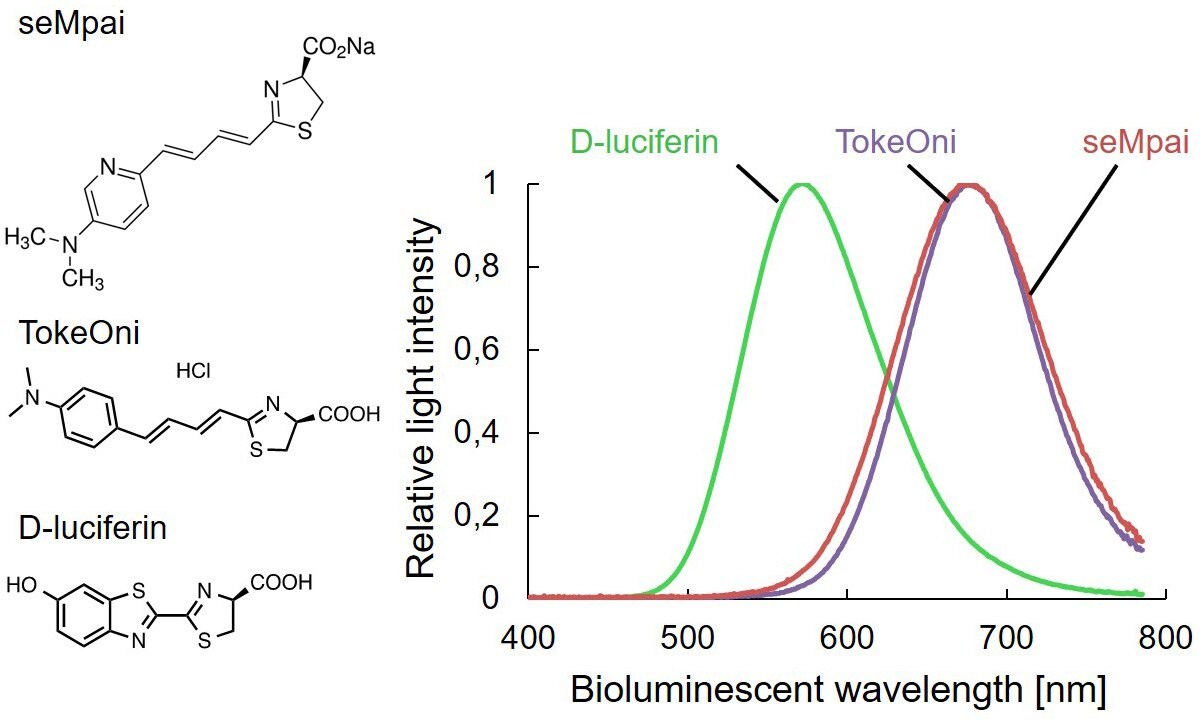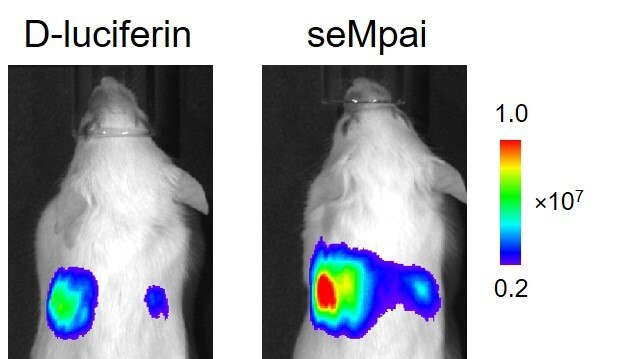TokeOni Analog - seMpai: Properties & Applications
Introduction
Bioluminescence imaging (BLI) has been an indispensable technique for noninvasive and highly sensitive observation of biological events in living tissues1-3. Firefly luciferase (Fluc) and D-luciferin have been a standard bioluminescence system for noninvasive small animal imaging. This bioluminescence system generates light signals within visible wavelength (λmax = 560 nm) where light is highly absorbed by hemoglobin and melanin4,5. This fact motivated us to develop a bioluminescence system generating near-infrared light that could penetrate living tissues deeply. Maki et al. evaluated synthetic substrate TokeOni (aka AkaLumine-HCl) (Product No. 808350) that emits near-infrared (λmax = 677 nm) in the reaction with native Fluc6. BLI imaging with TokeOni successfully achieved highly sensitive imaging of deep tissues7. However, poor solubility (< 1 mM) of TokeOni in neutral-buffered aqueous media limits its applications in some biological experiments.
Highly soluble TokeOni analog: seMpai for highly sensitivity deep tissue imaging in neutral buffer conditions
We are now introducing a newly synthesized substrate, seMpai (Product No: 902268), a TokeOni analog that emits near-infrared bioluminescence in the reaction with Fluc, similar to TokeOni (Figure 1). In addition, seMpai offers high solubility (> 60 mM) in neutral-buffered aqueous media and is stable for several months under -80 ˚C.

Figure 1.Chemical structures and bioluminescent spectrums of SeMpai, D-luciferin and TokeOni.
Detection of lung metastasis in mice demonstrated that the detection sensitivity of seMpai is higher than that of D-luciferin (Figure 2) and is comparable with that of TokeOni8.

Figure 2.Highly-sensitive noninvasive imaging of lung metastasis with seMpai. The murine lung metastasis was established 2 weeks after intravenous injection of LLC/Fluc cells into B6 albino mice. The bioluminescence images were acquired 15 minutes after intraperitoneal administration of D-luciferin or seMpai (120 μMol / kg).
Summary
Overall results suggest that seMpai is a suitable substrate of near-infrared BLI for many biological experiments. Its high solubility in neutral buffer conditions further extends the bioluminescent application of TokeOni derivatives.
Materials
References
To continue reading please sign in or create an account.
Don't Have An Account?